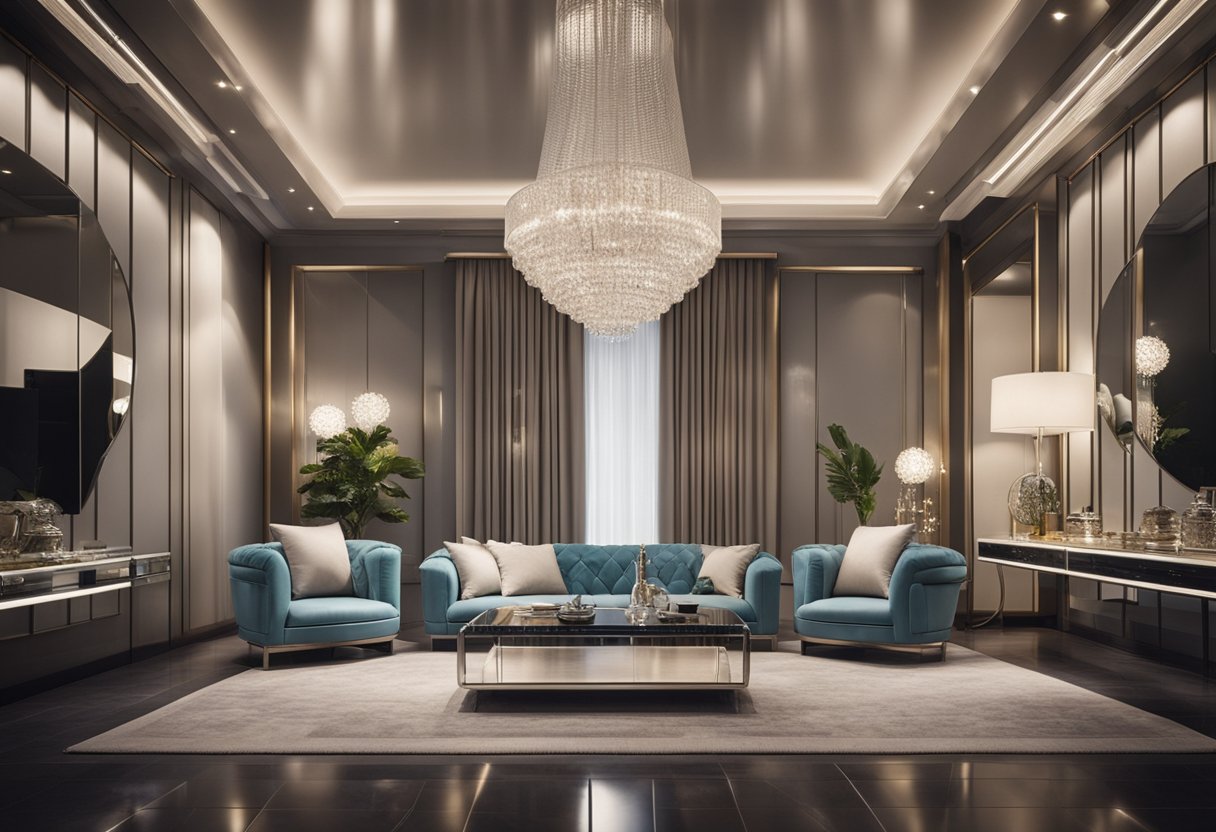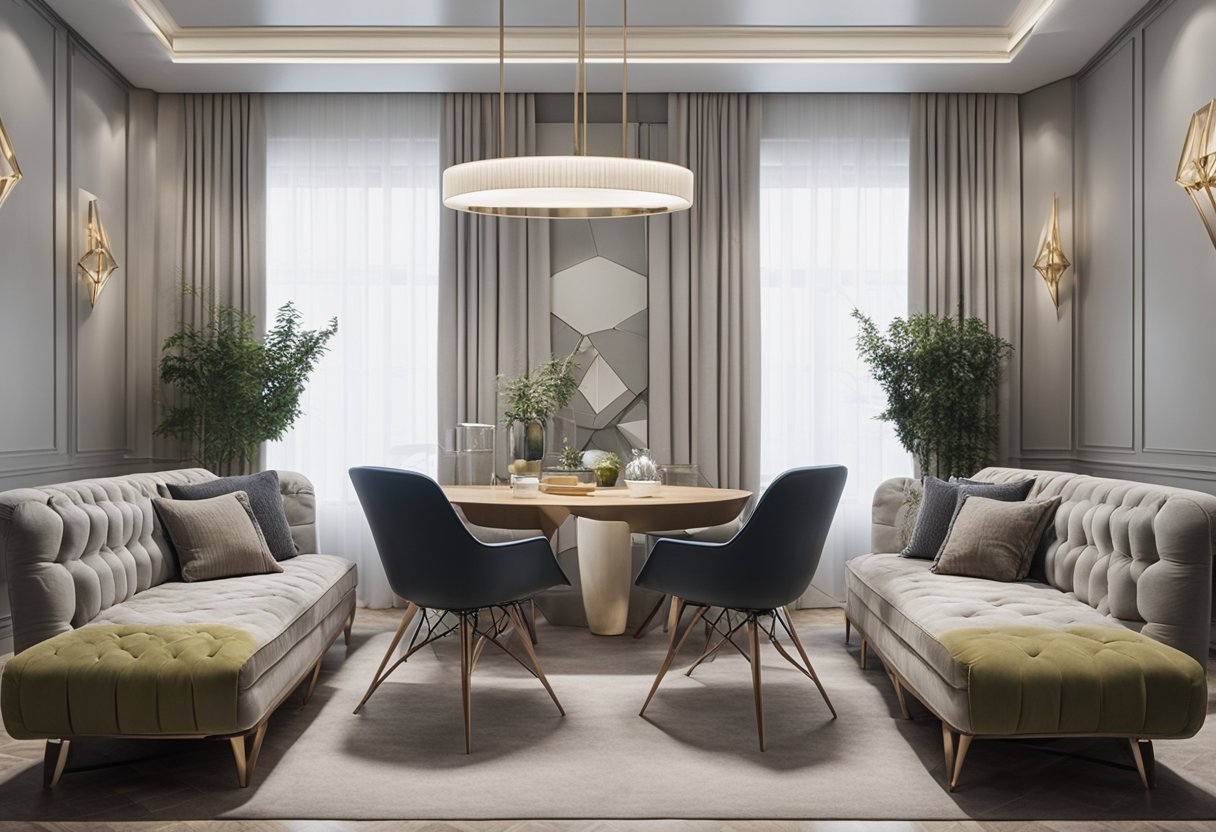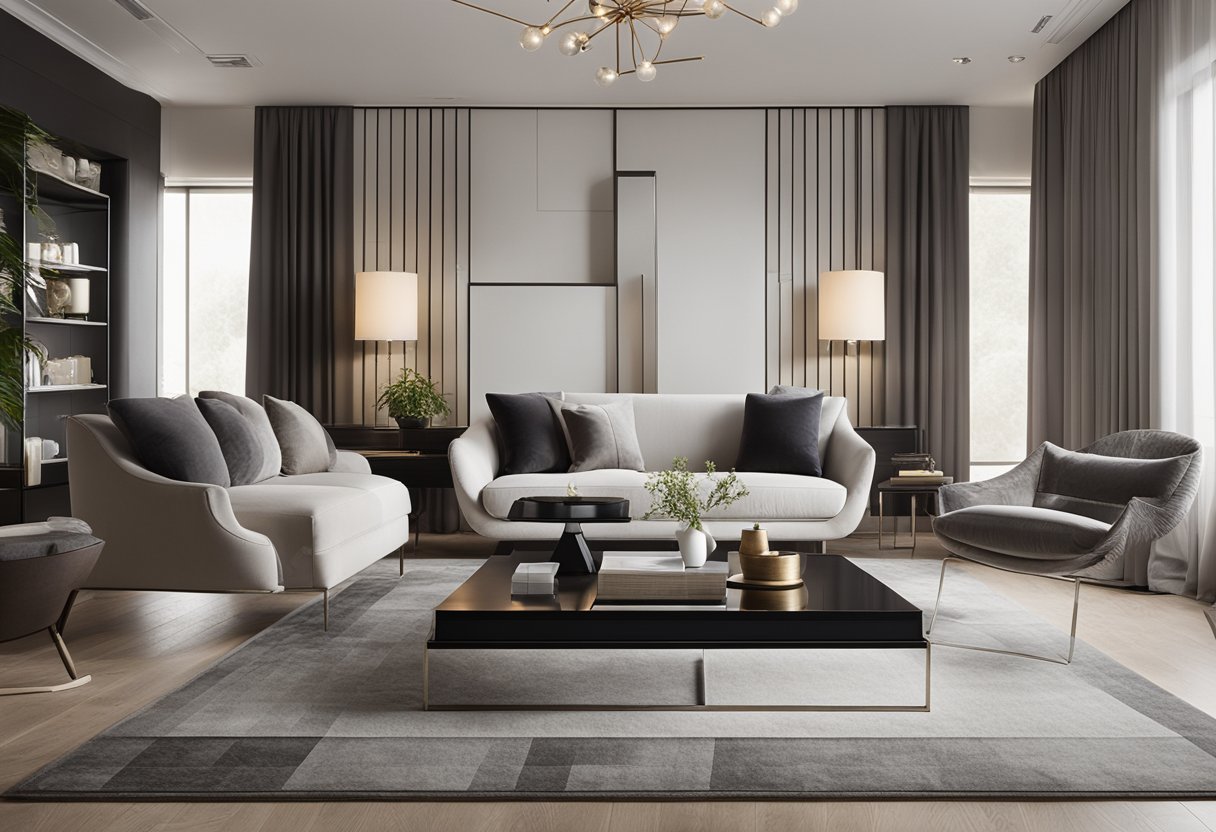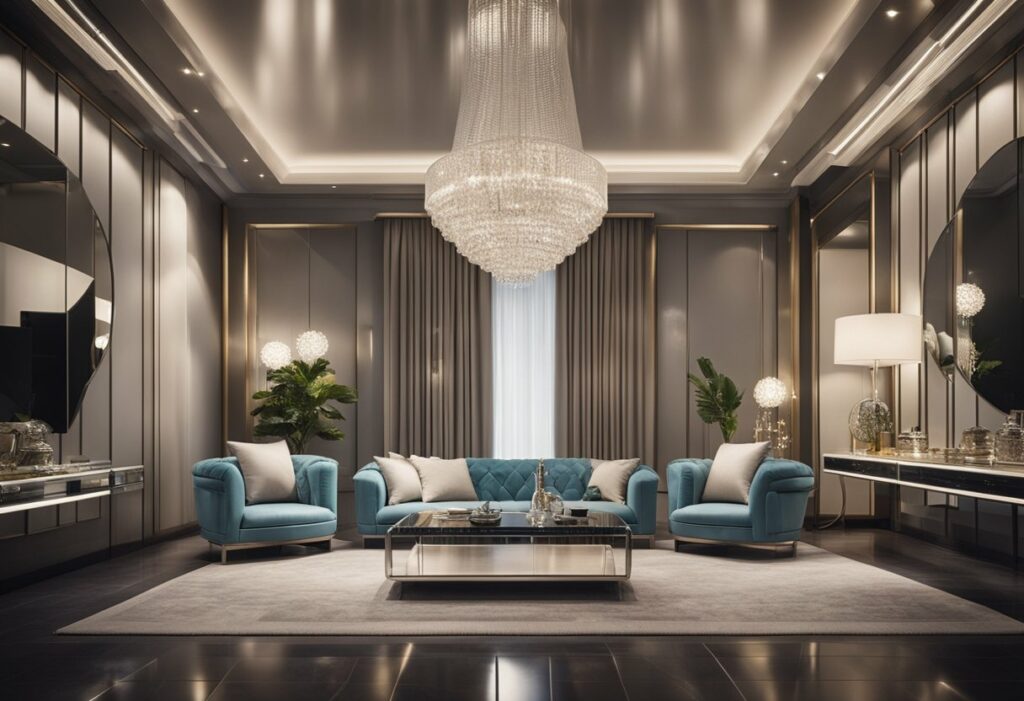Symmetry in Interior Design: The Key to Achieving Balance and Harmony in Your Home
Symmetry in interior design is a concept that involves creating balance and harmony in a space. It is a fundamental principle that designers use to create a sense of order and tranquility. The use of symmetry can create a comfortable and inviting atmosphere, making the space feel more welcoming and inviting. Symmetry can be applied to various interior spaces, from living rooms to bedrooms to bathrooms.

The fundamentals of symmetry in interior design involve creating balance in a space by using elements that are identical or similar in size, shape, and color. This can be achieved through furniture arrangement, lighting, and decor. The use of symmetry can create a sense of order and calmness, making the space feel more comfortable and inviting. Symmetry can also be used to highlight specific features in a space, such as a fireplace or a piece of artwork.
Applying symmetry in various interior spaces requires careful planning and consideration. It is important to choose the right elements and arrange them in a way that creates balance and harmony. The use of symmetry can be applied to various interior styles, from traditional to modern. It is a versatile concept that can be adapted to suit any space. By using symmetry in interior design, you can create a space that is both beautiful and functional.
Key Takeaways
- Symmetry in interior design creates balance and harmony in a space, making it feel more comfortable and inviting.
- The fundamentals of symmetry involve using identical or similar elements in size, shape, and color.
- Symmetry can be applied to various interior spaces and styles, creating a sense of order and tranquility.
Fundamentals of Symmetry in Interior Design

Symmetry is a fundamental concept in interior design that helps create harmonious and well-balanced spaces. Understanding symmetry and balance is key to creating a space that is both visually appealing and comfortable to be in. In this section, we will explore the role of symmetry in creating comfort and tranquility in your interior design.
Understanding Symmetry and Balance
Symmetry is the use of identical or similar design elements on either side of a central axis. This creates balance and harmony in a space, which can help to create a calming and relaxing environment. Symmetry can be achieved through the use of furniture, lamps, and other design elements that have visual weight.
The principle of symmetry is often used in architecture, where symmetrical design elements are used to create a sense of order and stability. Windows, for example, can be used to create symmetry in a room, as can architectural features such as fireplaces and archways.
The Role of Symmetry in Creating Comfort and Tranquility
Symmetry plays an important role in creating a comfortable and tranquil space. When design elements are balanced and harmonious, they can help to create a sense of calm and relaxation. This is particularly important in spaces where you want to feel comfortable, such as the bedroom or living room.
Symmetry can be used to create a focal point in a room, which can help to draw the eye and create a sense of visual interest. This can be achieved through the use of rugs, artwork, or other design elements that have a strong visual impact.
In addition to creating balance and harmony, symmetry can also be used to create a sense of rhythm and flow in a space. This can be achieved through the use of patterns, colours, and textures that are repeated throughout the room.
Overall, symmetry is an important design element that can help to create a comfortable and visually appealing space. By using the principles of symmetry and balance, you can create a space that is both aesthetically pleasing and comfortable to be in.
Applying Symmetry in Various Interior Spaces

Symmetry is a design principle that can be applied to all interior spaces to create a sense of balance, harmony and visual equilibrium. Here are some ways you can incorporate symmetry in different areas of your home.
Symmetrical Arrangements for Living Rooms
Living rooms are often the centrepiece of a home, so it’s important to create a space that is inviting and balanced. One way to do this is to use symmetrical arrangements. For example, you can place identical armchairs on either side of a central axis, or use matching lamps on side tables to create a sense of structure and movement. You can also use symmetrical shelving to display artwork, vases, and picture frames.
Achieving Balance in Bedrooms and Bathrooms
Symmetry can be used to create a calming and restful atmosphere in bedrooms and bathrooms. For instance, you can use a headboard as a central axis and place identical bedside tables and lamps on either side of the bed. In bathrooms, you can use symmetrical storage solutions and accessories to create a sense of order and balance.
Incorporating Symmetry in Functional Areas like Home Offices
Symmetry can also be used to create a sense of order and structure in home offices. For instance, you can use identical chairs and a monochromatic colour scheme to create a cohesive look. You can also use symmetrical furniture arrangements and lighting fixtures to create a sense of visual equilibrium.
Overall, incorporating symmetry in your interior design can help create a sense of balance and harmony in your home. Whether you’re decorating a living room, bedroom, bathroom or home office, using symmetrical arrangements and accessories can help create a cohesive and inviting space.
Frequently Asked Questions

What are the various forms of symmetry employed in interior decor?
Symmetry is a design principle that involves creating balance and harmony by arranging elements in a way that they are equally distributed on either side of a central axis. There are different forms of symmetry commonly used in interior decor, including:
- Reflective Symmetry: This involves mirroring elements on either side of a central axis, creating a sense of balance and order.
- Rotational Symmetry: This involves arranging elements around a central point, creating a radial pattern that draws the eye towards the centre of the room.
- Translational Symmetry: This involves repeating patterns or shapes in a linear or grid-like fashion, creating a sense of rhythm and continuity.
How can asymmetry introduce a dynamic vibe to a room’s design?
While symmetry is often used to create a sense of balance and order, asymmetry can introduce a dynamic vibe to a room’s design. By intentionally breaking the rules of symmetry, you can create a sense of movement and energy in a space. Asymmetry can be achieved through the use of varying shapes, sizes, colours, and textures.
Could you showcase some stunning examples where symmetry has been a game-changer in interior styling?
Symmetry can be a powerful tool in interior styling, creating a sense of elegance and sophistication. For example, a pair of identical chairs placed on either side of a fireplace can create a sense of balance and order in a living room. Similarly, a symmetrical gallery wall can create a focal point in a hallway or entryway.
In what ways does asymmetrical balance bring about harmony in a living space?
Asymmetrical balance involves arranging elements in a way that they are not identical on either side of a central axis, but still create a sense of balance and harmony. By using varying shapes, sizes, colours, and textures, you can create a visually interesting and dynamic space that still feels cohesive and harmonious.
How does radial symmetry create a focal point in room layouts?
Radial symmetry involves arranging elements around a central point, creating a sense of balance and order that draws the eye towards the centre of the room. This can be achieved through the use of circular or spiral patterns, such as a round dining table surrounded by chairs, or a spiral staircase in the centre of a room.
Why is the concept of rhythm essential to achieving a visually pleasing interior?
Rhythm refers to the repetition of patterns or elements in a space, creating a sense of continuity and flow. By using repeated shapes, colours, and textures, you can create a visually pleasing interior that feels cohesive and harmonious. Rhythm can be achieved through the use of symmetrical or asymmetrical balance, as well as through the repetition of patterns or shapes in a linear or grid-like fashion.



